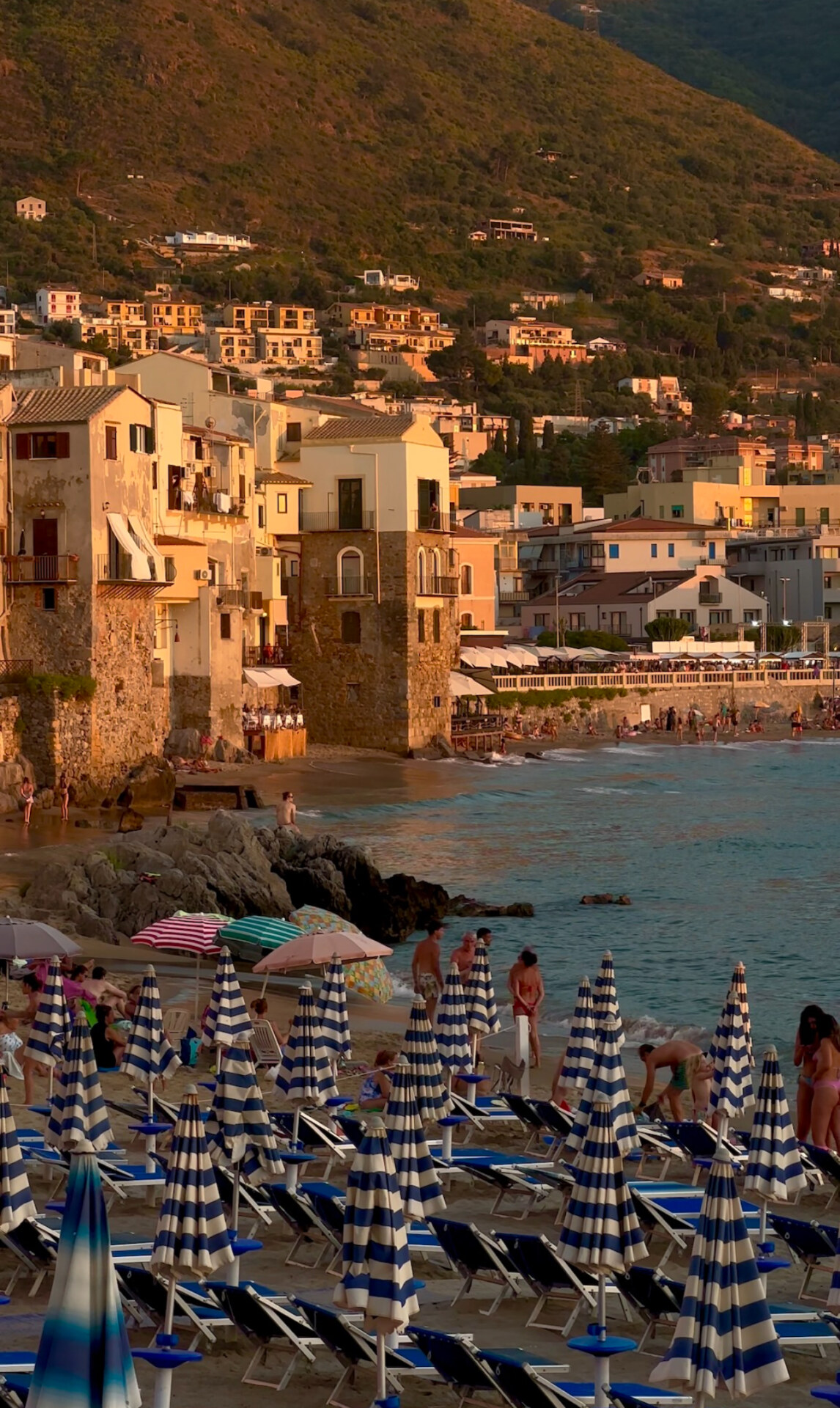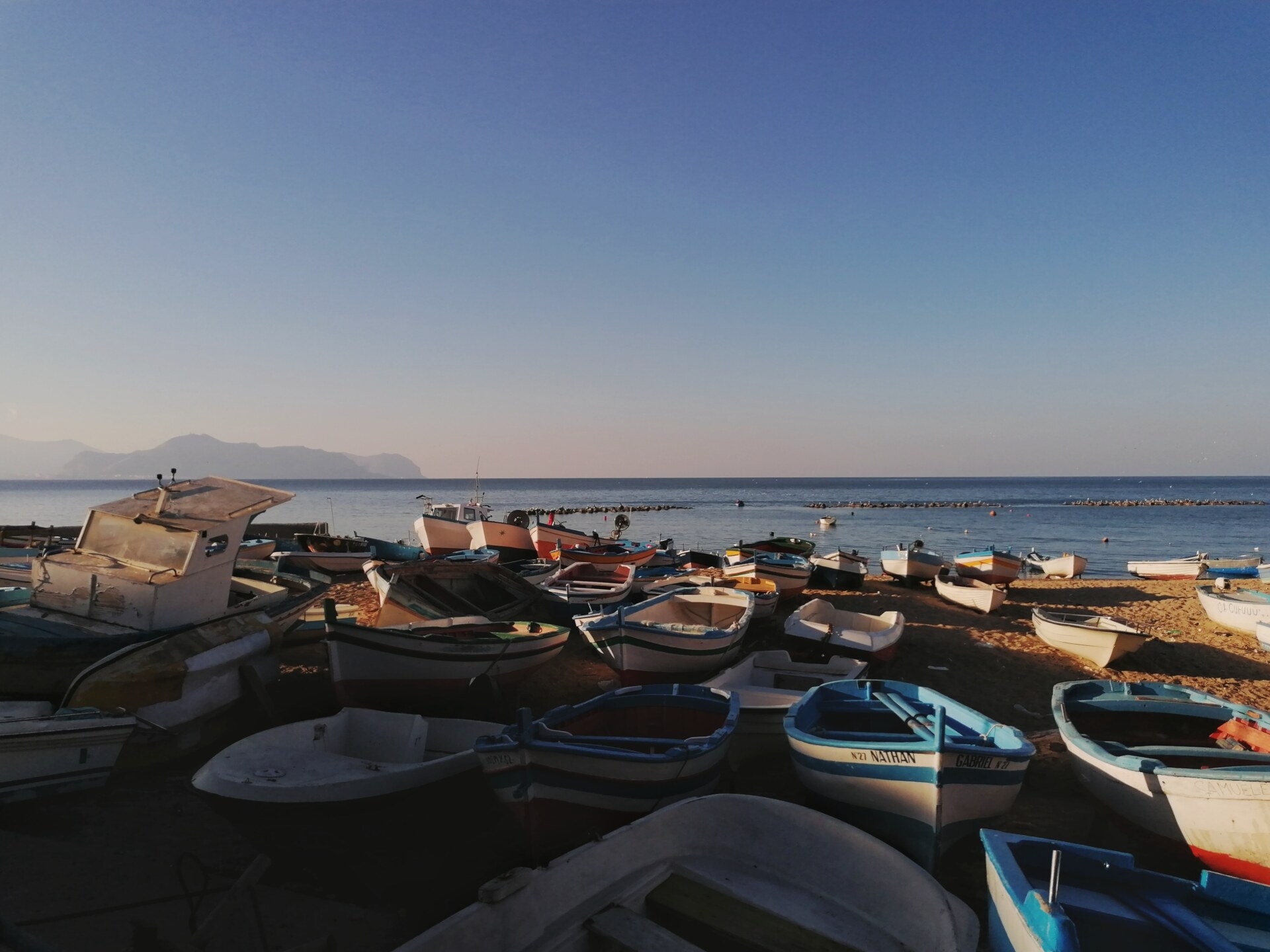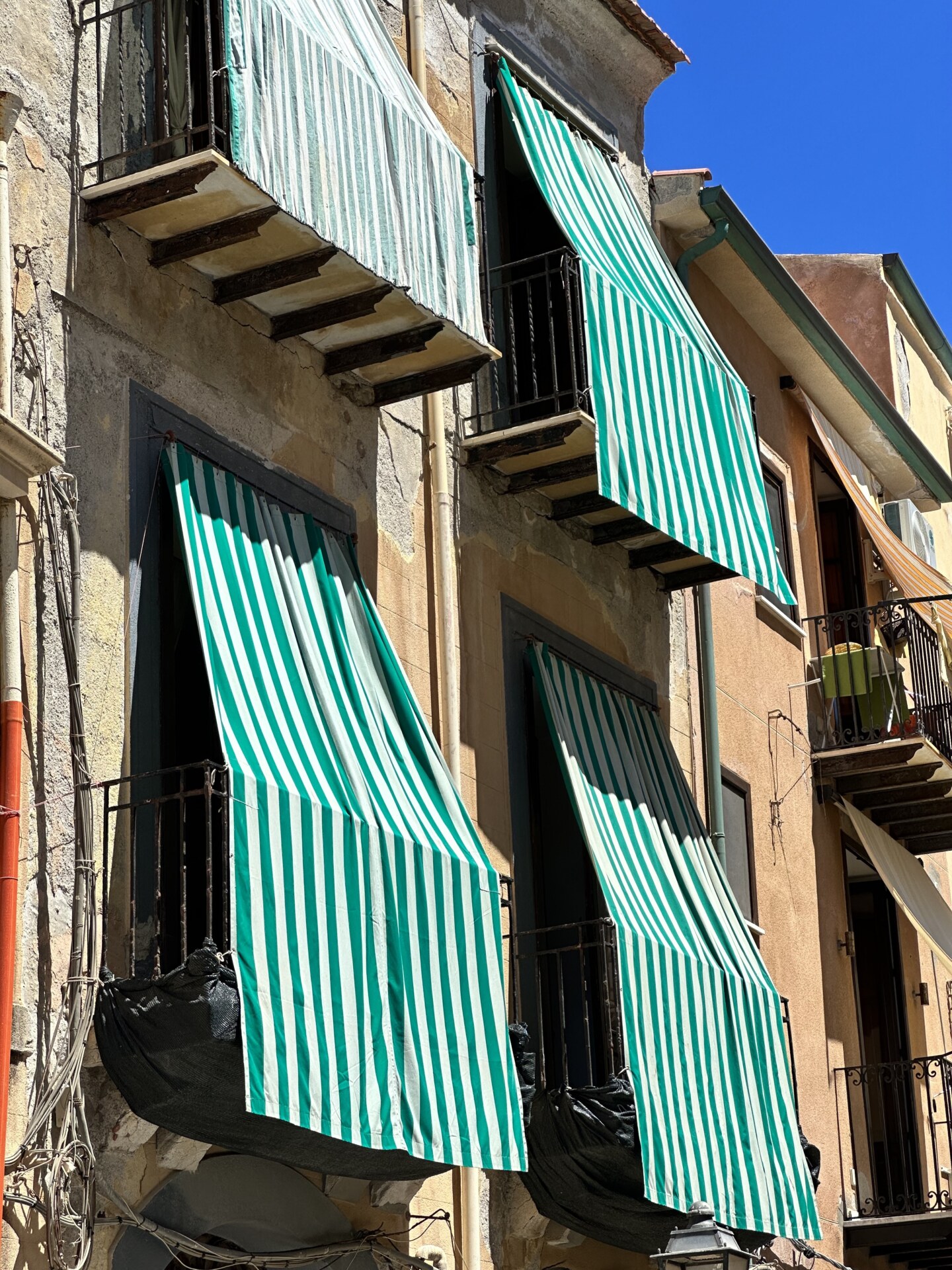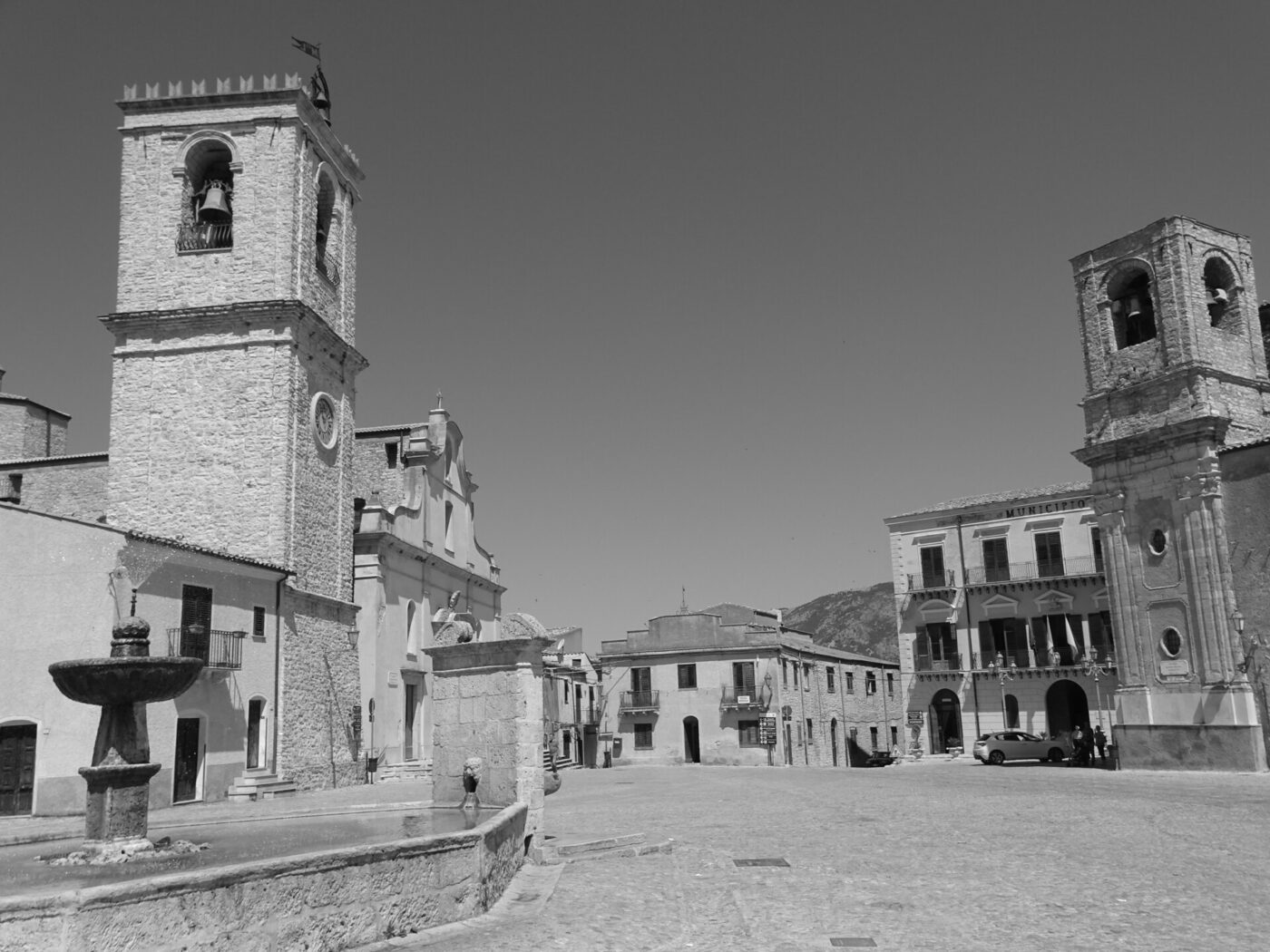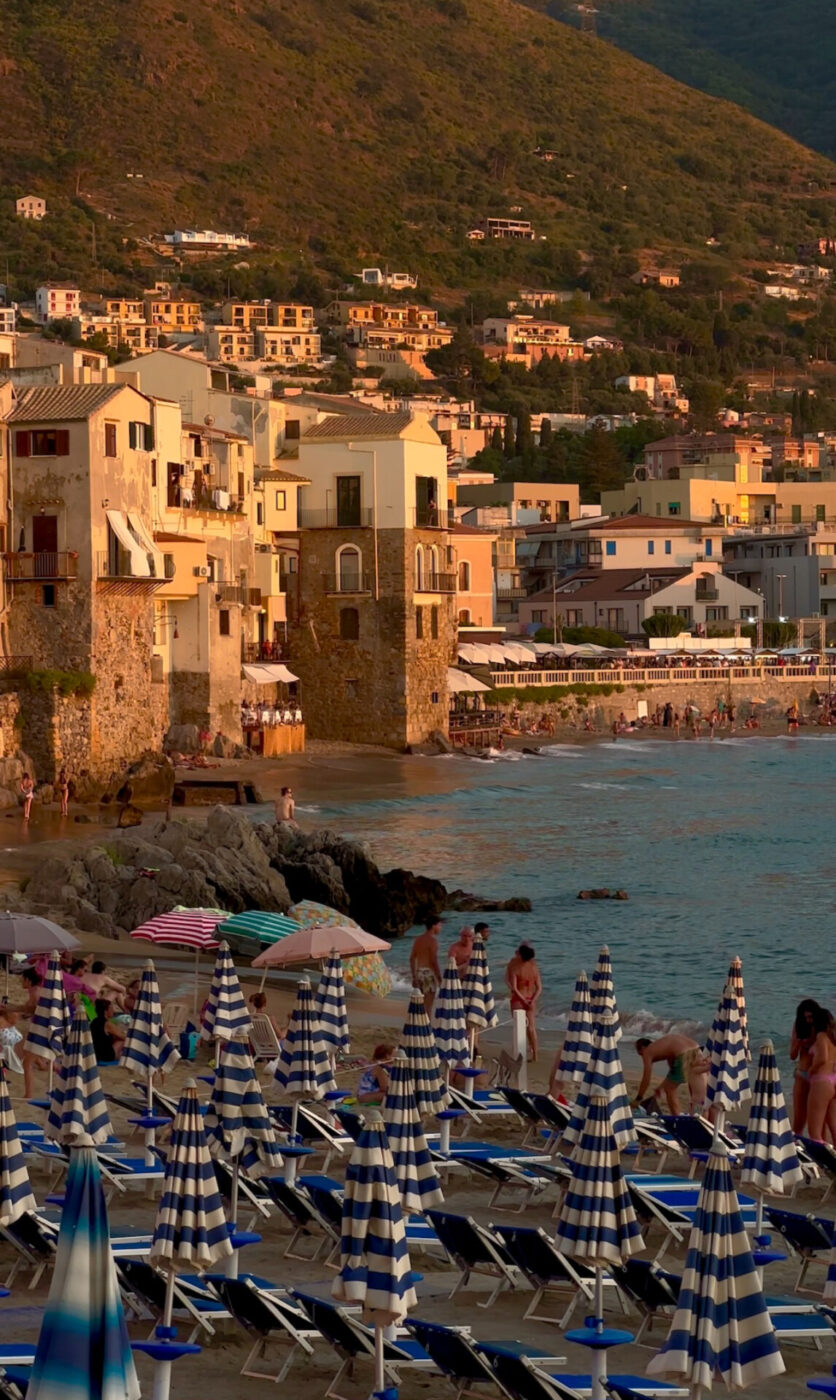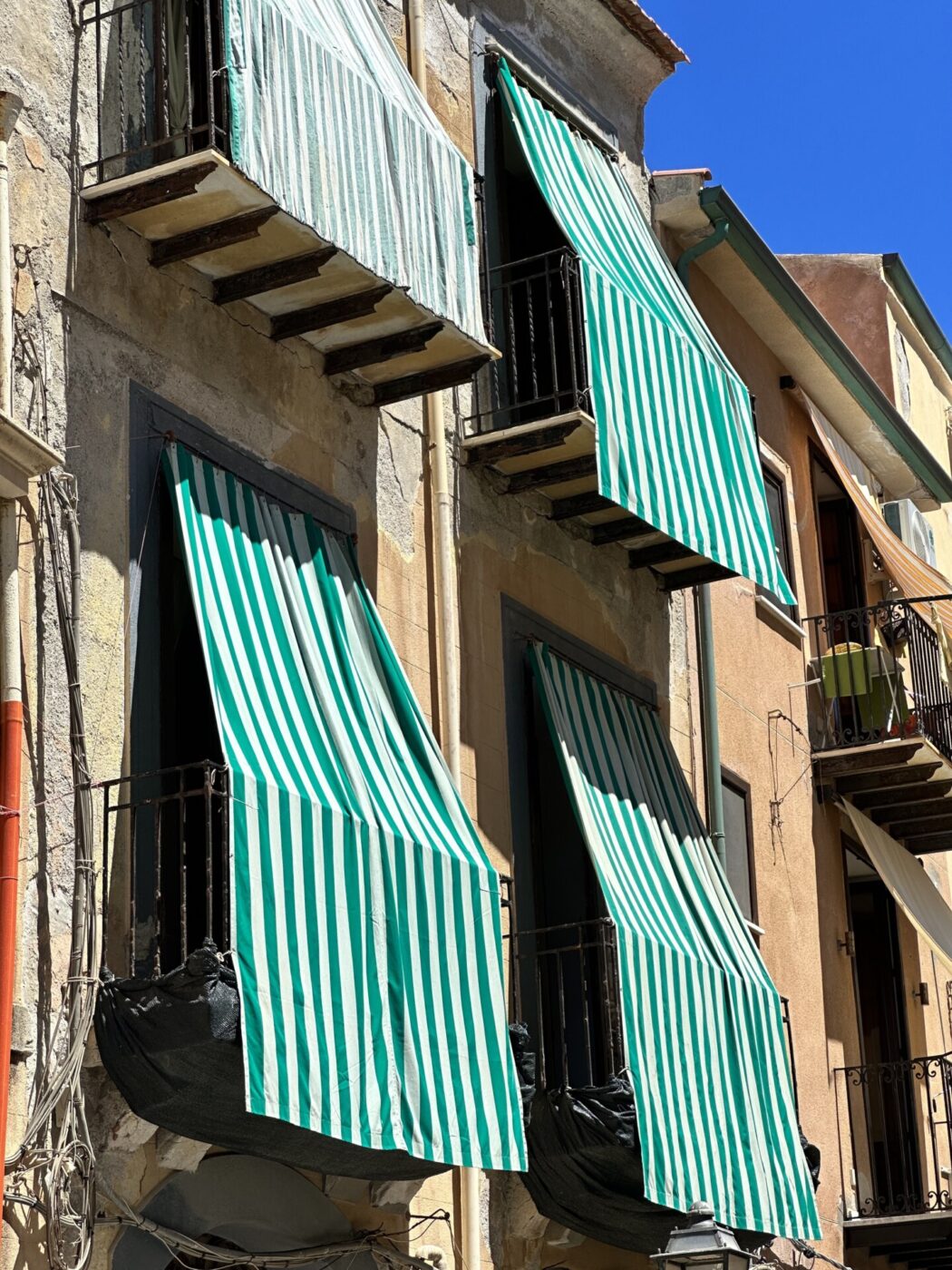Cinema Paradiso (1988) begins with a soaring opening score in stark contrast with the languid beauty of a clear blue sea and sky, visible through the gossamer curtains. This sonorific arc swiftly cuts to a darkened scene of suspended intimacy, where a lovers’ night is interrupted by an element of foreboding. Suddenly we’re inside a church, where our attention immediately focuses on the little altar boy, falling asleep on the job, the simple act of ringing the handheld bell at the appropriate intervals within the ecclesiastical ritual. We can almost smell the incense as it wafts around the church and up to the camera, which looks down from the altar as if from the perspective of Christ himself.
Cinema Paradiso is inarguably one of the most beloved movies of Italian cinema–and for good reason. The film tells the story of Salvatore, a celebrated director whose memories of his upbringing in a small Sicilian village are evoked by the news that the projectionist of the local cinema, Alfredo, has died. His plans to return to his hometown for the funeral plunge the viewer into a reflection on the film director’s childhood and the impacts of his friendship with Alfredo. As such, the film’s narrative extends across almost two decades of Salvatore’s life–from the hours little “Totò” spent escaping his mother’s watchful eye to lurk around the projectionist’s room at the top of the cinema, to falling in love with the beautiful Elena, to reaching the decision to leave home and seek his fortune in the wider world. It is a narrative that is as personal as it is an age-old “coming of age” story.
It is perhaps for such reasons that on its release in 1988, Cinema Paradiso was met with almost immediate global acclaim–although just the second film written and directed by Giuseppe Tornatore. After winning the Academy Award for Best Foreign Film in 1989, the movie’s reputation trickled through popular culture, leading many to call it one of the most influential films of all time. In turn, Cinema Paradiso put Italian cinema back on the map after the long lapse since its heyday in the 1960s under the impetus of Federico Fellini, inciting a new wave of experimental Italian film directors.
But what is it about Cinema Paradiso that aligns it with the mid-century zeitgeist, which still endures to the present day? The film–in its run of 155 minutes, its international version of 124 minutes, or the Director’s Cut at 173 minutes–has made it through to the annals of cinematic heritage. This is not a fluke, nor is it due to a mass hysteria. The plot is, after all, a seemingly simple story: a boy leaves home, makes his fortune and returns to his hometown with fresh eyes that have seen a wider world. Perhaps it’s this simplicity that makes it so enduring: a tale as old as time, universal without regard to context, country or career path. Or perhaps it’s because there’s another layer of sfogliatelle to this visual delight. Cinema Paradiso is a film about film, about the beauty of the cinema and the power that movies exert over us. In reflecting on the act of going to the cinema and the mechanisms behind reel projections, Cinema Paradiso is an in-depth exploration into how cinema held and continues to hold a central place within our society.
In the age of Netflix and streaming series on tiny laptop screens from the comfort of our bedrooms, hidden under duvets, Cinema Paradiso is now more relevant than ever before. Every time I watch it, I’m struck by a deep nostalgia for going to the theatre–for that anticipatory moment of folding down the velvet seat and waiting for the lights to dim and the projector to roll. I miss debating with my friends which movie to choose, which theatre has the best schedule, where to eat after. But one of the biggest reasons we go to the cinema is to empathize and to feel: Cinema Paradiso cuts right to the core of this.

The town square in Cinema Paradiso is Piazza Umberto I in the village of Palazzo Adriano, about 30 miles south of Palermo.
Driven by socio-political forces, Alfredo, the projectionist, has cut all physical scenes–even of just kisses–out of the movies that are shown in the small Sicilian theatre. Every time that a scene builds towards one such moment, there is a hushed silence, a pause and then a collective groan when the scene cuts away. The villagers never feel that deep satisfaction when two lovers who finally end up together or for the couple who, despite their arguments, cannot bear to live without each other. This gratification is denied and censored, and the tension of this refusal builds and builds like a lover lusting after the one they love but unable to reach them. Who has not felt this pain? Who has not longed for a kiss that has been denied to them? These scenes, however, are not lost but carefully preserved on a reel by Alfredo, guarded like precious memories. It is only in the final scenes of Cinema Paradiso that the adult Totò finds this reel and sits back in his cinema seat–no longer one of the 1950s but one of the contemporary era–that the reason for which we go to the cinema comes together. He watches scene after scene of kisses.
How many of us would not say that our early understanding of what romance (and lust too) comes from films? Movies play a huge role in shaping our lives–especially as children–and manage to retain a continued hold on us for many years to come. To watch Cinema Paradiso is to consider how our own narrative can be told through the movies that we have impressed upon us.
There is therefore something that so many of us can identify with in Cinema Paradiso, even if the film has an essentially autobiographical note (Tornatore has spoken much of his earliest encounters with cinema–in Bagheria, just outside Palermo where he grew up–and how they shaped his career path). Beyond this personal element, and emotional resonance, Cinema Paradiso left a lasting mark on the technicalities of filmmaking. Inspired by Cinema Paradiso, childhood flashbacks to formative moments of cinema have now emerged in various directors’ movies: Paolo Sorrentino’s The Hand of God, Paolo Almodovar’s Pain & Glory, Nanni Moretti’s Caro Diario.
Fundamental to Cinema Paradiso are the dusty surroundings of the Sicilian village, with its peeling facades and whitewashed walls, imagery that preempts Michael Radford (and Massimo Troisi’s) similarly suggestive scenes in Il Postino. Shot after shot of surprising camera angles also make Cinema Paradiso a trailblazer. Whether looking down at little Totò from the church altar or through iron railings at teenaged Toto, the proportions of so many scenes are distorted. This technique can be placed on a continuum with the next generation of filmmakers: Luca Guadagnino’s ways of showing passion through intimate camera angles has something in common with Tornatore’s methods, as does Paolo Sorrentino’s frequently used device of filming from above in La Grande Belleza. These angles, coupled with a score by Ennio Morricone, create a strong sensorial experience. The movie’s haunting refrain, that recurs again and again, has a listful element that alludes to a sense of loss, the strings echoing a simple yet moving melody. In contrast, the tune that plays when we see the relationship between Totò and Alfredo, with its staccato violin notes, is uplifting while containing two different melodies that allude to the duo’s separation in age and lifetimes. (Cinema Paradiso set the basis for a collaboration between Tornatore and Ennio Morricone that would continue for another 32 years. Morricone wrote the score for every subsequent movie produced by Tornatore.)
And so, when I talk about the legacy of Cinema Paradiso, I speak about its resonance on an emotional as much as a technical level. Tornatore might be recognized as a key player in the re-establishment of Italian cinema’s reputation–for his resonant techniques and storytelling–but there is something so much more beyond these tangible elements. In one respect, it makes a call for us to not forget the joy of going to the cinema, no matter how convenient it may be to watch a movie via home-streaming services. But in a deeper way, the film reminds us that we find our ways in this world with the help of others–fictional and otherwise.
